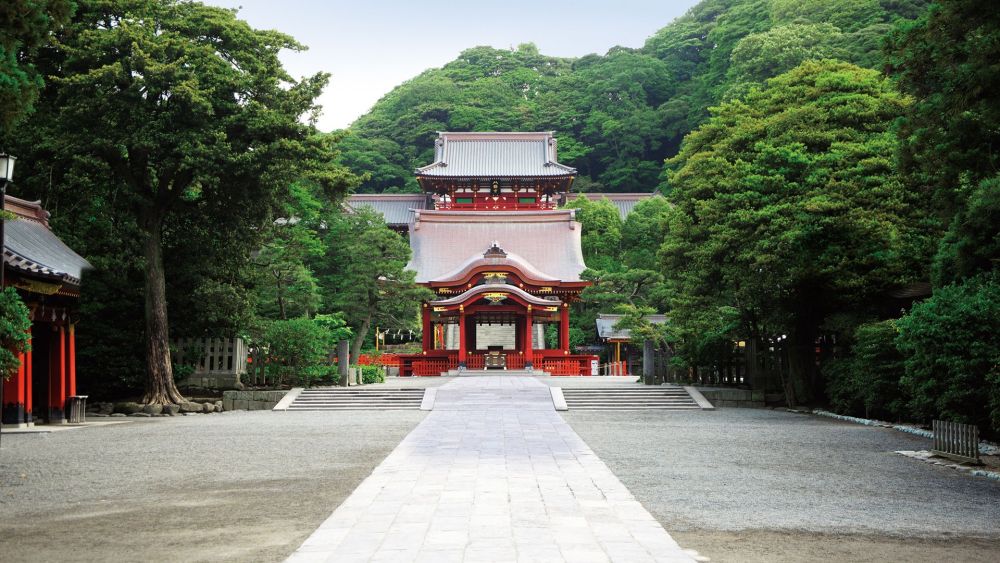Tsurugaoka Hachimangu is the most important Shinto shrine in the city of Kamakura, Japan, situated in the central part of the city. Established by Minamoto no Yoritomo, the founder of the Kamakura Shogunate, in the year 1063, it was originally built to honor Hachiman, the patron god of the Minamoto family and of the samurai in general. Over the centuries, Tsurugaoka Hachimangu became a center of cultural and political activities. The approach to the shrine is via a long, wide street called Dankazura, which becomes progressively narrower as it reaches the shrine, symbolizing the unification of the visitor with the kami (Shinto gods) as they approach the sacred place. The shrine complex includes several buildings of great historical and architectural significance, as well as a beautiful pond and gardens. It's also known for its vibrant festivals, particularly the New Year celebrations and the Shogatsu festival, which attract visitors from across Japan and the world. The shrine is a focal point of Kamakura's spiritual and cultural landscape, offering a glimpse into Japan's ancient traditions and architectural elegance.

